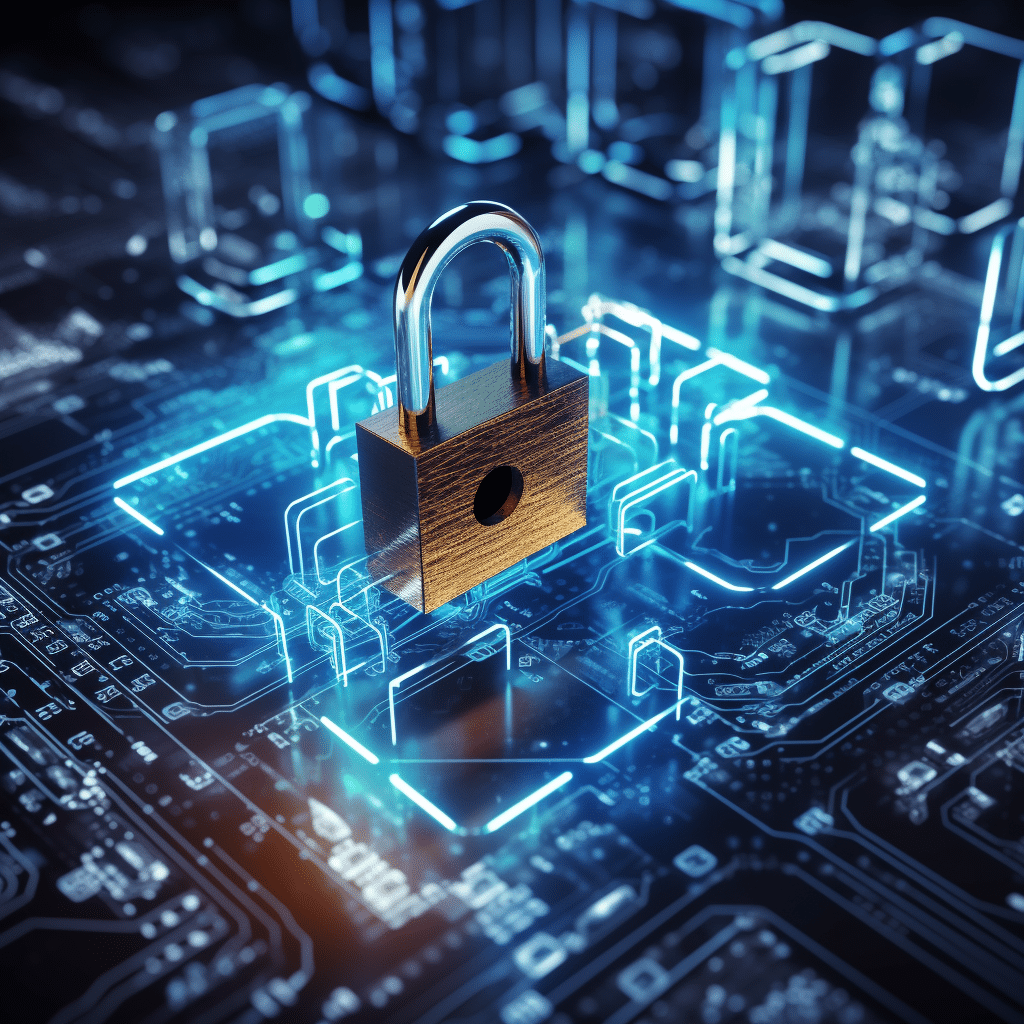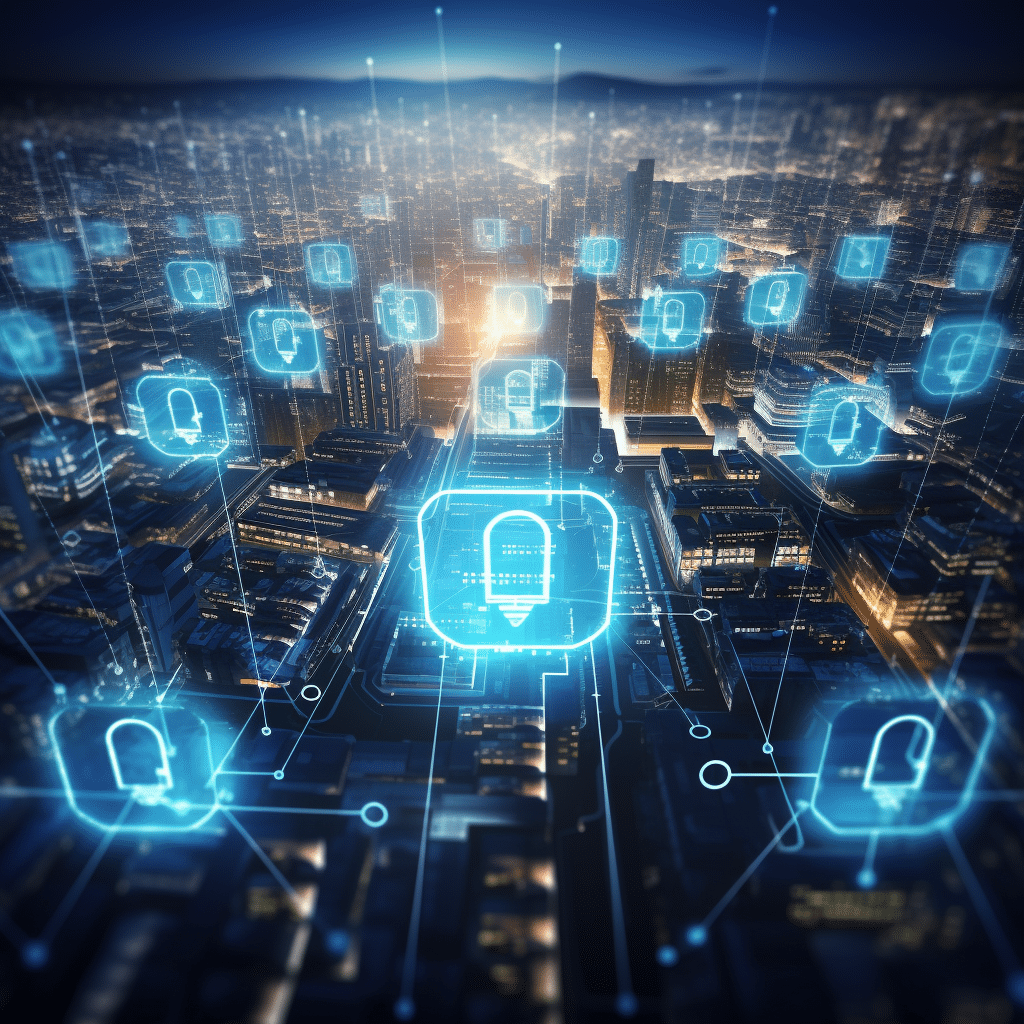The rapid evolution of technology has led to the convergence of IoT and access control systems. This intersection has brought about transformative changes in businesses worldwide, including data-driven decision-making, increased efficiencies, and streamlined operations. The security of IoT is crucial for its full potential to be unlocked, and it is at a crossroads, with the need for integration with cybersecurity. Adoption of IoT is expanding across industries, but there are challenges to overcome, such as security vulnerabilities and the lack of multi-layered security design. Moving from isolated clusters to a fully interconnected IoT ecosystem requires collective decision-making and collaboration between IoT and cybersecurity teams.
Key Takeaways:
- The convergence of IoT and access control systems enables data-driven decision-making and streamlined operations.
- Security is a critical concern for the successful integration of IoT, requiring collaboration between IoT and cybersecurity teams.
- Challenges in IoT adoption include security vulnerabilities and the need for multi-layered security design.
- Cross-industry adoption of IoT requires collective decision-making and collaboration.
- Addressing the challenges and harnessing the potential of IoT can optimize security and streamline operations.
The Importance of Cyber Security in IoT
Cyber security plays a crucial role in the successful integration of IoT into various industries. With the rapid expansion of the IoT ecosystem, ensuring the security of connected devices and networks has become paramount. The fragmented nature of the current IoT and cyber security landscape presents significant challenges to achieving a fully interconnected IoT ecosystem. Businesses and individuals alike are concerned about the potential risks and vulnerabilities associated with IoT, such as data breaches and unauthorized access.
IoT is hard to adopt because of security concerns that get worse with more devices. To fix this, businesses must focus on strong security like encryption and regular updates. Privacy is also important and needs good policies and user agreement. Interoperability is a big problem because there are no accepted standards for IoT communication. To fix this, we need to agree on standards. Finally, data management is crucial for success with IoT.
The Importance of Multi-Layered Security Design
One of the critical aspects of cyber security in IoT is the need for multi-layered security design. This approach involves implementing security measures at various levels, including the physical devices, network infrastructure, and data storage. By adopting a multi-layered security framework, businesses can mitigate risks and vulnerabilities at each stage of the IoT ecosystem.
“The fragmented nature of the current IoT and cyber security landscape presents significant challenges to achieving a fully interconnected IoT ecosystem.”
Furthermore, leveraging advanced technologies like encryption, authentication mechanisms, and access controls can provide an additional layer of protection against unauthorized access and data breaches. By adopting a comprehensive security strategy, businesses can minimize the potential impact of cyber threats and ensure the seamless and secure integration of IoT technologies into their operations.

| Benefits of Cyber Security in IoT | Challenges |
|---|---|
| Enhanced security for connected devices and networks | Security vulnerabilities in IoT solutions |
| Protection against data breaches and cyber attacks | Lack of universally accepted standards |
| Confidentiality and integrity of IoT data | Fragmented IoT and cyber security landscape |
| Building trust for wider adoption of IoT | Reluctance to invest in insecure IoT technologies |
In conclusion, cyber security is of utmost importance in the IoT ecosystem. Businesses must prioritize the integration of robust cyber security measures to ensure the protection of IoT devices, networks, and data. By adopting a multi-layered security design and collaborating between IoT and cyber security teams, businesses can mitigate risks, build trust, and unlock the full potential of IoT technologies.
Addressing Critical Factors for IoT Market Adoption
The adoption of IoT is influenced by various critical factors that businesses need to address to ensure successful implementation. These factors include security concerns, privacy concerns, interoperability, data management, and regulatory hurdles. By effectively addressing these factors, businesses can drive the wider adoption of IoT across industries.
IoT adoption has difficulties due to security worries that increase with more connected devices. Businesses need to prioritize strong security measures such as multi-layered designs, encryption protocols, and regular device and system updates. Privacy is also important and needs strong policies and user consent. Interoperability is a critical challenge due to a lack of accepted standards and protocols, which hinders communication between IoT devices and systems. Adopting interoperability standards will unlock IoT’s potential. Data management is also crucial for successful IoT adoption.
Businesses can benefit from IoT-generated data by implementing data management systems and advanced analytics tools. These strategies help to collect, store, analyze, and derive insights from the data. By doing so, businesses can make informed decisions based on the data.
Table: Critical Factors for IoT Market Adoption
| Factors | Challenges |
|---|---|
| Security concerns | Data breaches, cyberattacks, lack of multi-layered security |
| Privacy concerns | Collection and use of personal data, transparency |
| Interoperability | Lack of standards, difficulties in device integration |
| Data management | Handling and analyzing massive amounts of IoT-generated data |
| Regulatory hurdles | Compliance with data transmission regulations |
Regulatory hurdles make it difficult for IoT to be adopted. Businesses need to follow data protection and privacy regulations. Collaborating with regulatory bodies and keeping up-to-date can help businesses overcome these challenges. With security measures, privacy policies, data management, and compliance with regulations, businesses can use IoT to innovate, streamline operations, and grow.
The Role of IoT in Access Control Systems
IoT technology has revolutionized access control systems, bringing innovative solutions that enhance security, improve efficiency, and provide an improved user experience. By integrating IoT devices, sensors, and systems, access control systems have become smarter and more advanced, enabling real-time monitoring, remote access control, and automation of access processes.
IoT can make access control better with biometric authentication and mobile credentials. Biometrics like fingerprints or facial recognition can make access more secure and convenient. Mobile credentials, stored on smartphones or wearables, can replace traditional access cards and make access simpler.
IoT can also help with data-driven decision-making in access control. By collecting and analyzing data from IoT devices and sensors, access control systems can adjust to changing security needs. This approach helps businesses control access permissions, identify vulnerabilities, and optimize access processes for efficiency.
The Benefits of IoT in Access Control:
- Enhanced security through biometric authentication and mobile credentials
- Improved efficiency with real-time monitoring and automation
- Seamless user experience by eliminating the need for traditional access cards
- Data-driven decision-making for better control and optimization
“The integration of IoT technology in access control systems has transformed the way we manage security. By leveraging innovative solutions and harnessing the power of data, businesses can ensure enhanced security, streamlined operations, and an improved user experience.” – Access Control Expert
| Benefits of IoT in Access Control | Enhanced Security | Improved Efficiency | Seamless User Experience |
|---|---|---|---|
| Biometric authentication | Utilize fingerprints or facial recognition | Real-time monitoring | Eliminate the need for traditional access cards |
| Mobile credentials | Stored on smartphones or wearables | Automation of access processes | |
| Data-driven decision-making |
Wi-Fi Positioning Systems in IoT
Wi-Fi positioning systems are revolutionizing indoor navigation and tracking in IoT applications. These systems utilize Wi-Fi signals to accurately determine the location of devices within a specific area, overcoming the limitations of GPS in indoor environments. Wi-Fi positioning provides a reliable and cost-effective solution for businesses that rely on location-based services.
Wi-Fi positioning systems are very accurate. They work better indoors than GPS. You can use them to navigate inside buildings easily. They are also good for tracking things and people. This can help businesses be more efficient.
Advantages of Wi-Fi Positioning Systems in IoT:
- Accurate indoor navigation
- Reliable tracking of assets and personnel
- Cost-effective solution compared to GPS
Wi-Fi positioning systems provide a game-changing solution for businesses seeking to leverage IoT for indoor navigation and tracking. With their superior accuracy and reliability, these systems unlock new possibilities for optimizing operations and enhancing the user experience.
In conclusion, Wi-Fi positioning systems play a critical role in the successful implementation of IoT. By harnessing the power of Wi-Fi signals, businesses can achieve accurate indoor navigation, reliable asset tracking, and improve overall operational efficiency. As the IoT landscape continues to expand, integrating Wi-Fi positioning systems will become increasingly important for organizations looking to leverage the full potential of IoT technologies.
| Advantages of Wi-Fi Positioning Systems in IoT |
|---|
| Accurate indoor navigation |
| Reliable tracking of assets and personnel |
| Cost-effective solution compared to GPS |

Conclusion
As we conclude our exploration of the intersection of IoT and access control systems, it is clear that this convergence brings about significant benefits and challenges. The integration of IoT technology in access control systems offers enhanced security, improved efficiency, and a seamless user experience. Real-time monitoring, remote access control, and data-driven decision-making are just a few of the innovative solutions made possible by IoT.
However, it is essential to address the challenges that come with IoT adoption in access control systems. Security vulnerabilities, privacy concerns, and interoperability issues must be effectively tackled to ensure the successful integration of IoT and access control. Collaboration between IoT and cyber security teams, early-stage integration of cyber security in IoT architecture design, and addressing critical factors for IoT market adoption are all crucial steps in unlocking the full potential of IoT in access control systems.
By harnessing the benefits and overcoming the challenges, businesses can optimize security and streamline operations. The transformative power of IoT in access control systems is within reach, and with careful planning and implementation, organizations can unlock a new era of innovation and efficiency.
FAQ
What are the benefits of integrating IoT and access control systems?
The integration of IoT and access control systems enhances security, improves efficiency, and provides a seamless user experience.
What are the challenges in the adoption of IoT?
The challenges in the adoption of IoT include security vulnerabilities, privacy concerns, interoperability issues, and managing and analyzing massive amounts of generated data.
How can cyber security be integrated into IoT?
Cyber security can be integrated into IoT by addressing security vulnerabilities, implementing multi-layered security design, and ensuring secure transmission and reliable implementation of updates and patches.
How can Wi-Fi positioning systems benefit IoT applications?
Wi-Fi positioning systems provide accurate indoor positioning and tracking, enabling seamless indoor navigation and asset tracking for IoT applications.
What critical factors influence the adoption of IoT?
Critical factors influencing the adoption of IoT include security concerns, privacy concerns, interoperability, data management, and compliance with regulatory environments.
How can IoT enhance access control systems?
IoT enhances access control systems by enabling real-time monitoring, remote access control, automation of access processes, and implementation of innovative solutions such as biometric authentication and mobile credentials.

